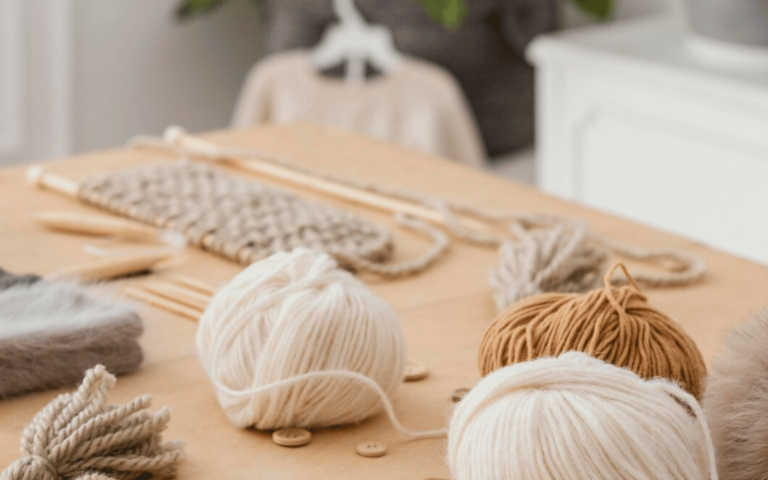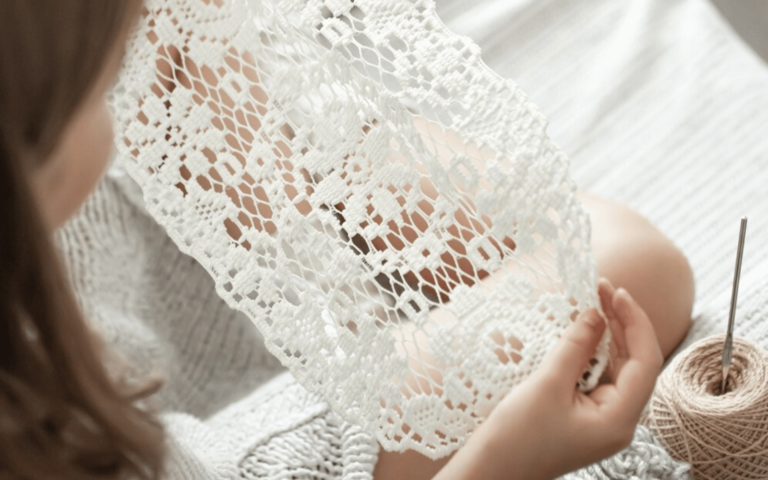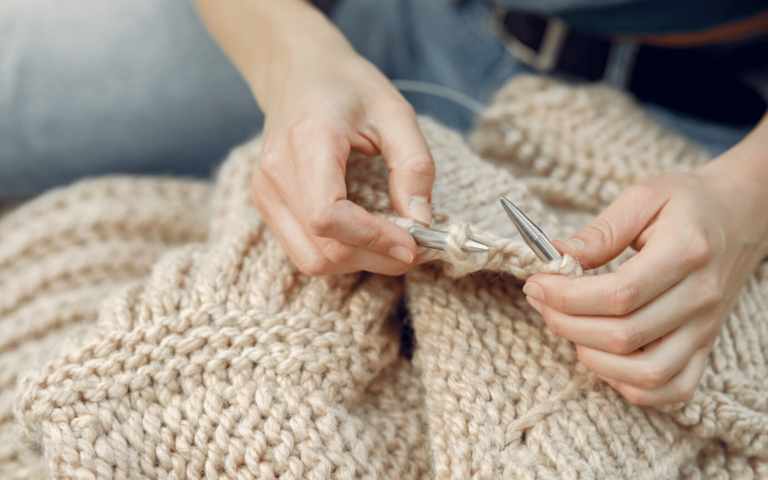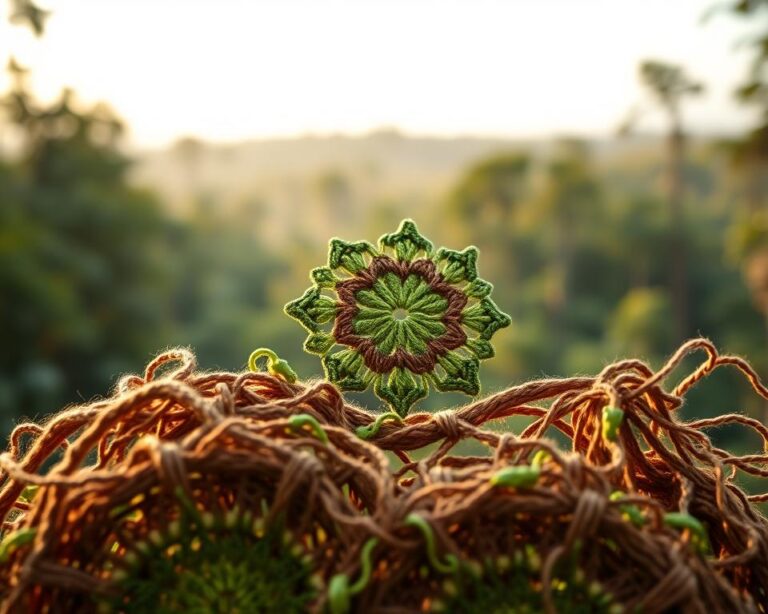Knitting with Wire: Creating Unique and Durable Wire Knit Jewelry
Wire knitting in jewelry making is an intricate technique that involves crafting jewelry pieces using various knitting methods with wires of different gauges and materials. The art of wire knitting allows for the creation of unique, durable, and visually stunning jewelry items that stand out due to their intricate designs and structural resilience. This specialized craft merges the traditional techniques of knitting with the creativity and precision required in jewelry making, offering a diverse range of possibilities for artisans and crafters.
The significance of wire knitting in the realm of jewelry making lies in its ability to produce distinct pieces that stand out in the market. The appeal of wire knit jewelry is rooted in its capacity to blend creativity with durability, enabling the creation of intricate patterns, textures, and designs that may not be as feasible with traditional jewelry-making methods. The uniqueness of wire knit jewelry lies not only in its aesthetic appeal but also in its ability to withstand the test of time, resulting in pieces that are both visually captivating and robust.
Wire knit jewelry offers several benefits, including its adaptability in design. Crafters can create an array of jewelry items, from delicate and elegant pieces to bold and chunky designs, owing to the versatility of wire knitting techniques. Moreover, the durability of wire knit jewelry makes it an excellent choice for everyday wear, as it can withstand the rigors of daily use without losing its charm. Additionally, this craft allows for personalized creations, where individuals can tailor designs according to their preferences, making each piece a unique and personalized work of art.
Understanding Wire Knitting in Jewelry Making
The history of wire knitting in jewelry-making traces back to ancient civilizations, where metal wires were utilized to create ornate adornments. Over time, this technique evolved, with different cultures contributing to the refinement and diversification of wire knitting methods. Today, modern artisans incorporate historical techniques while infusing contemporary design concepts, resulting in a rich tapestry of wire-knit jewelry traditions.
The materials used in wire knitting for jewelry making vary, including an assortment of wire gauges and Sorts. Crafters often work with metals such as copper, silver, gold, and various alloys. The selection of wire depends on the desired design, as different metals offer varying degrees of malleability, color, and texture. Additionally, crafters may also incorporate non-metal elements like leather, fibers, or other materials to complement and enhance the overall design of the jewelry piece.
The tools necessary for wire knitting in jewelry making are fundamental to the creation process. Basic tools such as wire cutters, pliers, shaping tools, and a mandrel or jig are essential for manipulating and forming the wire. Each tool serves a specific purpose, aiding in cutting, bending, and shaping the wire to achieve the desired design. Additionally, specialized tools for wire knitting, like knitting spools or looms, provide a structured platform for intricate designs and patterns.
The Sorts of wire used in knitting jewelry are diverse and serve different purposes in crafting unique pieces. Crafters commonly utilize round, square, or half-round wire in various gauges to create different textures, patterns, and structures. Round wire is versatile and often used for basic knitting, while square wire offers distinct edges and angles in designs. Half-round wire combines the characteristics of both round and square wires, providing a balance for specific design requirements. Understanding the attributes of each wire Sort is in achieving the desired aesthetics in wire knit jewelry.
Techniques for Knitting with Wire
Basic knitting stitches in wire jewelry involve fundamental techniques that form the foundation of wire knit designs. Techniques such as the knit stitch, purl stitch, and various combinations create the basis for intricate patterns and structures. Working with wire requires attention to detail and precision, as the malleability and strength of the wire can differ from traditional yarn used in knitting.
Moving beyond basic stitches, advanced knitting techniques elevate wire jewelry to intricate and complex designs. Incorporating beads into wire knit patterns adds an extra dimension, providing opportunities for unique embellishments and textures. Moreover, creating complex patterns and textures involves intricate maneuvers and variations in stitching, resulting in visually captivating and structurally robust jewelry pieces.
Designing Wire Knit Jewelry
Designing wire knit jewelry involves considering various elements that contribute to the overall aesthetics of the piece. Factors such as wire gauge, color, texture, and the incorporation of gemstones or beads play pivotal roles in the design process. Crafters must carefully select these elements to ensure cohesiveness in the final jewelry piece, aligning with the desired style and theme. Wire knitting allows for an extensive examination of patterns and styles, enabling crafters to create an array of designs, from classic and elegant to modern and avant-garde. Different knitting techniques, such as lace patterns, cables, or braids, offer diverse stylistic options. Additionally, understanding the impact of patterns on the final piece aids in creating visually appealing and unique designs.
Drawing inspiration for wire knit jewelry can come from various sources, including nature, art, architecture, and cultural elements. Observing shapes, colors, and textures in the surrounding environment can spark innovative design ideas. Moreover, browsing through historical or contemporary jewelry designs, attending art exhibitions, and going to online platforms can offer a wealth of inspiration to fuel the creative process. Crafting original wire knit jewelry patterns involves a blend of creativity and technical know-how. Designers often start with sketches or drafts, experimenting with different stitches and techniques to create unique patterns. Documenting these patterns and making necessary adjustments or modifications ensures the reproducibility of designs, allowing crafters to share their creations or reproduce them for commercial purposes.
Enhancing Wire Knit Jewelry
Embellishments and accents add an extra dimension to wire knit jewelry, enhancing its visual appeal. Crafters can incorporate various elements like charms, beads, or small metal accents to add detail and uniqueness to their pieces. These additions provide opportunities for personalization, allowing crafters to create one-of-a-kind jewelry items. Coloring or coating wire knit jewelry involves various techniques such as patination, enameling, or coating the wire with specialized materials. These methods offer a wide range of color choices and surface finishes, contributing to the overall aesthetics of the jewelry piece. Crafters experiment with different coloring or coating techniques to achieve the desired visual effects in their designs.
Gemstones and crystals are often integrated into wire knit jewelry to add a touch of elegance and sophistication. Crafters select gemstones based on color, cut, and significance, considering how they complement the overall design. The process of incorporating gemstones requires precision in handling and setting them within the wire knit structure. Finishing and polishing wire knit jewelry is a step in the jewelry-making process. Crafters utilize techniques like tumbling, buffing, or using specialized solutions to give the jewelry piece a polished and refined appearance. Proper finishing enhances the overall look of the jewelry, adding a professional touch to the final product.
Challenges and Solutions in Wire Knit Jewelry Making
Wire knitting poses challenges such as wire breakage, difficulty in maintaining tension, or intricacies in handling specific wire Sorts. These challenges require careful attention and troubleshooting to ensure the smooth progression of the crafting process. Crafters often employ solutions such as using proper tools, adjusting tension, or practicing specific techniques to address common challenges in wire knitting. Developing problem-solving skills and learning from experienced artisans can significantly aid in overcoming these hurdles. Avoiding mistakes in wire knit jewelry making involves practicing precision and attention to detail. Crafters must focus on consistent tension, using appropriate tools, and understanding the characteristics of the wire to minimize errors. Learning from mistakes and continually refining techniques is integral to improving craftsmanship in wire knitting.
Selling and Showcasing Wire Knit Jewelry
Establishing a brand for wire knit jewelry involves defining a unique identity, story, and aesthetic for the jewelry pieces. Crafters often develop a brand narrative that resonates with their target audience, highlighting the craftsmanship, materials used, and the inspiration behind their creations. Consistency in branding across various platforms, including online presence, packaging, and marketing materials, helps in building brand recognition.
Marketing wire knit jewelry online encompasses various strategies, including social media, e-commerce platforms, and personal websites. Crafters use visually appealing images, engaging content, and storytelling to showcase their jewelry pieces. Utilizing social media platforms like Instagram, Pinterest, or Facebook aids in reaching a broader audience, while e-commerce websites provide a platform for selling and conducting business transactions.
Participating in craft fairs, markets, or artisanal exhibitions offers crafters the opportunity to showcase their wire knit jewelry to a live audience. These events allow for direct interaction with potential customers, providing a platform to explain the craftsmanship, unique features, and inspirations behind the jewelry pieces. Crafters can also gain valuable feedback and insights while building relationships with customers and other artisans. The presentation of wire knit jewelry is in attracting potential customers. Crafters pay attention to the display of their pieces, ensuring an attractive and organized arrangement that showcases the jewelry’s intricate details. Using appropriate display stands, lighting, and backdrops enhances the overall visual appeal, drawing attention to the uniqueness of each piece.
Attention and Maintenance of Wire Knit Jewelry
Maintaining wire knit jewelry involves regular cleaning to preserve its luster and appearance. Crafters recommend using mild soaps or specialized jewelry cleaning solutions with a soft brush to remove dirt or tarnish. Proper cleaning ensures the longevity of the jewelry piece while retaining its original shine. Proper storage helps prevent tangling, scratching, or damage to wire knit jewelry. Crafters advise storing each piece separately in soft pouches or compartments to avoid entanglement. Additionally, keeping jewelry away from direct sunlight, moisture, or harsh chemicals ensures its longevity. Crafters often provide guidance on minor repairs or maintenance for wire knit jewelry. Basic repairs such as fixing loose wires, repositioning beads, or resealing coatings can be done at home with proper guidance. For more extensive repairs, seeking professional help is recommended to maintain the integrity of the piece.
Wire Knit Jewelry: Creativity and Innovation
Innovative techniques and experimental approaches allow crafters to push the boundaries in wire knitting. Delving into unconventional materials, unique patterns, or combining different artistic forms contributes to the evolution of wire knit jewelry, enabling the creation of extraordinary and avant-garde designs. Collaborations with other artists or artisans, along with the integration of mixed media, offer new dimensions to wire knit jewelry. Combining wire knitting with techniques from other crafts, such as weaving, sculpting, or painting, creates hybrid art forms, expanding the possibilities in jewelry making.
Continual innovation and evolving trends shape the future of wire knit jewelry. Anticipated developments might involve eco-friendly materials, sustainable practices, and the integration of technology into jewelry designs. Moreover, the ongoing examination of cultural influences and the fusion of traditional and contemporary elements are expected to drive the future trends in wire knit jewelry.
Tools and Materials for Wire Knitting
When setting out to knit with wire, selecting the right tools and materials is crucial. This section aims to provide a thorough understanding of what you need to begin creating wire knit jewelry and how these choices can influence the final product’s look and durability.
Firstly, the choice of wire is fundamental. Wire for knitting jewelry typically ranges in gauge from very fine, like 28-gauge, to slightly thicker options such as 20-gauge. The thinner the wire, the more flexible and easy to manipulate it will be, though it will also be more delicate. On the other hand, thicker wires provide sturdiness but require more effort to bend and shape. Most commonly, crafters use copper, sterling silver, or gold-filled wires due to their malleability and color variety. Each material brings a different aesthetic to the table and can affect the overall feel of the jewelry piece.
Secondly, the type of needles used can significantly impact your knitting experience. Unlike traditional yarn knitting, wire knitting demands needles made from sturdier materials. Metal knitting needles or specially designed wire knitting tools can be ideal. These should have smooth surfaces to prevent the wire from snagging. The size of the needles will depend on the gauge of wire you choose; typically, larger needles are used for thicker wires to create looser loops, which are easier to manage and less likely to break.
In addition to wire and needles, having a pair of good-quality pliers (round-nose and flat-nose) and wire cutters is essential. These tools help in manipulating the wire, making loops, and trimming the ends neatly. A small-scale hammer or a rubber mallet might also be required for flattening or hardening the finished pieces, which helps in maintaining their shape.
Regarding supplementary materials, beads, clasps, and other embellishments can be added to your wire knit jewelry to enhance its appeal. Beads can be threaded onto the wire before knitting begins or attached afterward to adorn the jewelry. Clasps are necessary for bracelets and necklaces and should be chosen to complement the style and weight of the finished piece.
Finally, the surface on which you work plays a role in the ease and comfort of your crafting. A smooth, flat, and non-scratch surface is ideal for wire knitting. Some crafters prefer to use a bead mat or a soft cloth underneath their work to prevent the wire from sliding and to catch any small beads or findings.
As you gather these tools and materials, remember that each choice will influence not only the crafting process but also the final look and durability of your jewelry. By understanding the properties of different wires and tools, you can experiment with various techniques to create truly unique and personalized wire knit jewelry. This knowledge serves as a foundation upon which you can build your skills and expand your creative horizons in the art of wire knitting.







